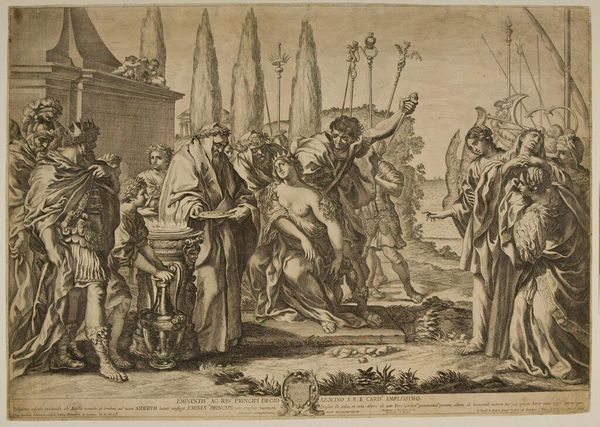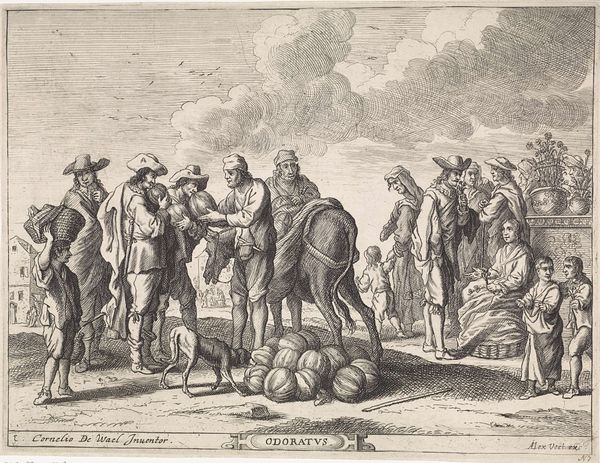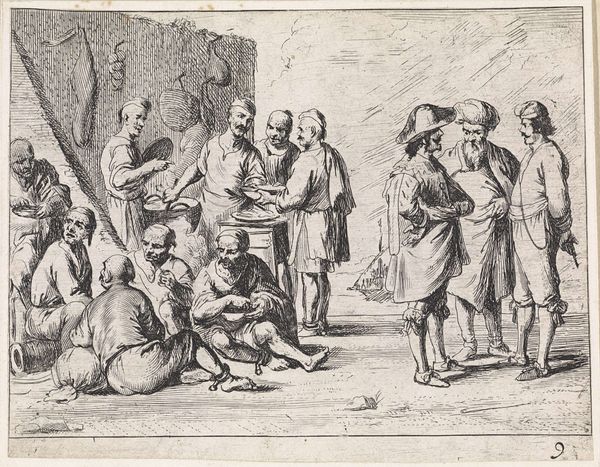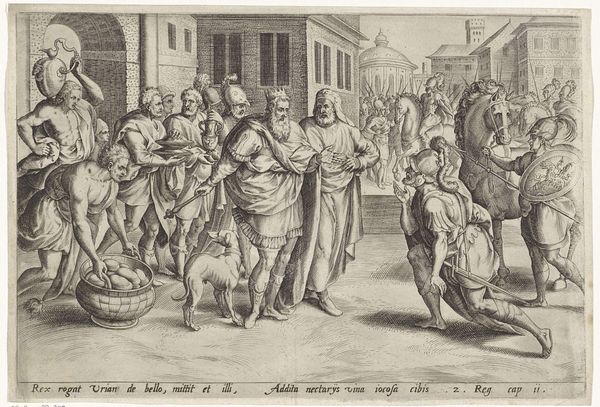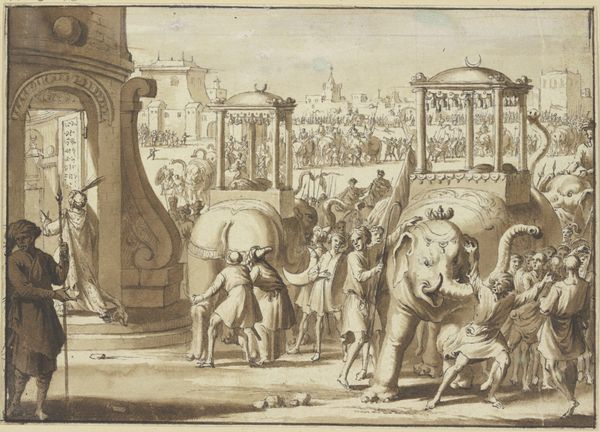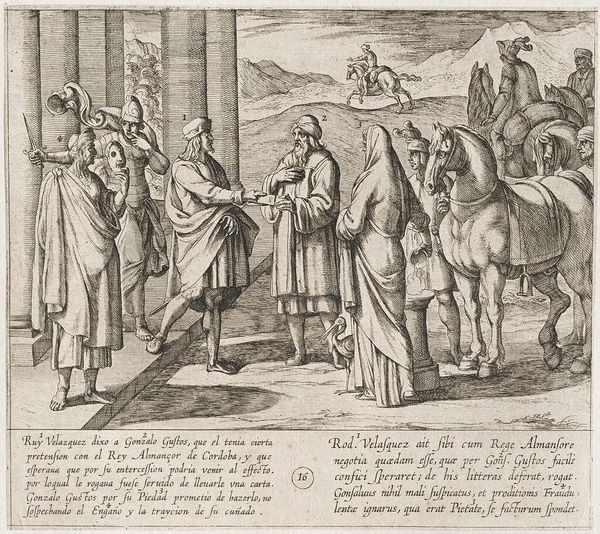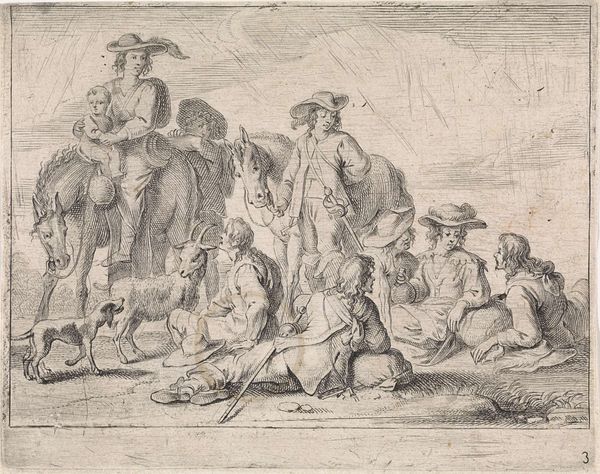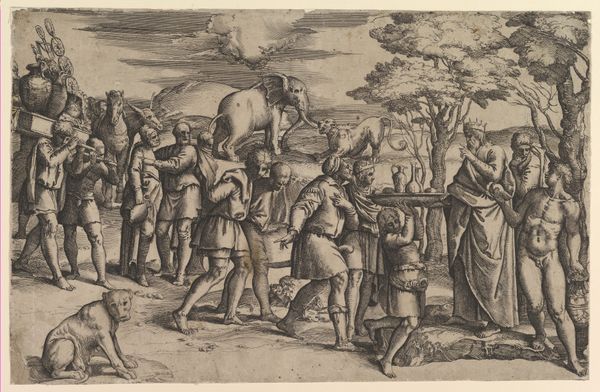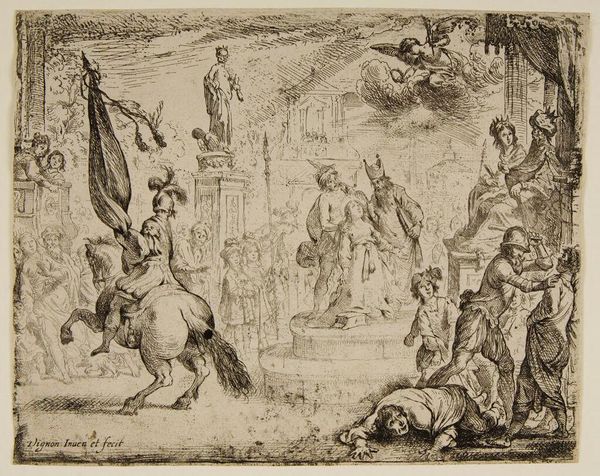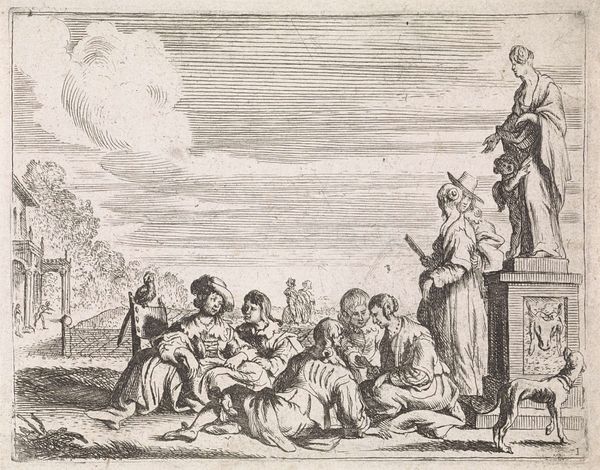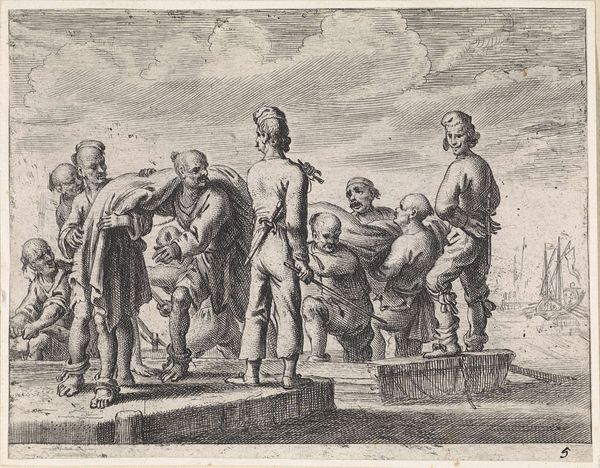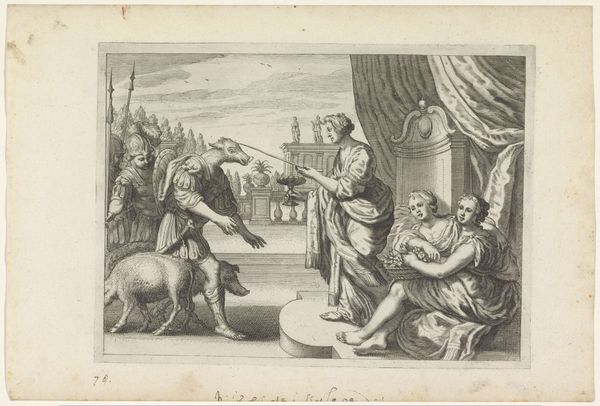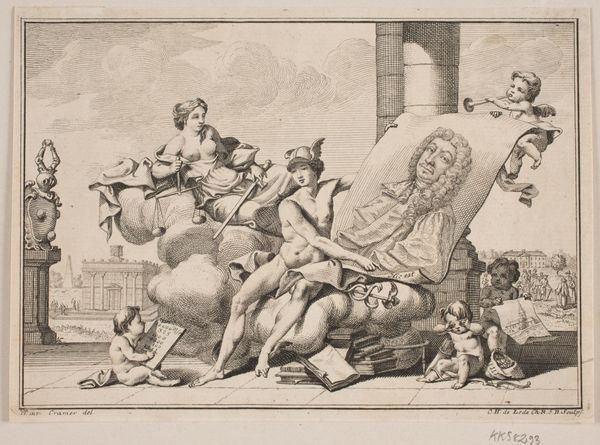
print, engraving
#
narrative-art
#
baroque
# print
#
figuration
#
genre-painting
#
engraving
Dimensions: height 226 mm, width 296 mm
Copyright: Rijks Museum: Open Domain
Curator: Allow me to introduce "Tastzin," an engraving dating from 1628 to 1689, by an anonymous artist. It is a wonderful example of baroque narrative art. Editor: My initial reaction is a sense of slightly chaotic realism, especially from the tonal gradations that creates the details. There’s a distinct contrast between the almost caricatured figures in the foreground and the hazier, less defined background, creating a feeling of depth. Curator: Yes, that depth really pulls you in, doesn’t it? Note how the composition seems almost theatrical, with a central action of tooth extraction taking place. But look beyond to see elements reflecting broader economic activities and perhaps the social stratification of the time. What sort of labor and commercial transaction are being performed here? And for whom? Editor: The interplay of light and shadow certainly contributes to the overall drama of the scene, though. The lines etched with varying degrees of fineness describe a great range of textures. Take the clothing; observe the drapery, but then see it fall more irregularly around the laborer. The etcher understood how to define form through simple value contrasts. Curator: Exactly! And don’t forget the very materiality of the printmaking process—the tools, the workshop, and its place in the broader media landscape of its day. The dissemination of imagery relies on skilled labor as much as it does artistic vision, isn't it? What does the image’s reproducibility mean for accessibility of narrative art in this period? Editor: True, the technical aspects are undeniably crucial. Though, I'm captivated by how the engraver directs the eye using diagonal lines. The positioning of figures, the gaze of many individuals, creates movement within a static plane. Also the various symbolic indicators, religious elements juxtaposed to labor acts. Curator: Those directing gazes speak to something. What stories do we tell ourselves? In addition, engravings, at this time, made art affordable and accessible. I think we often overlook the societal influence printmaking had on narrative consumption and art appreciation as a craft and enterprise. Editor: That's a strong point. It makes one think of who and how its artistry became democratized. Thank you for highlighting aspects of society and context to better enjoy the piece and think of all these elements. Curator: And thank you for shedding light on what really make up an aesthetic and make an engraving a true image of observation.
Comments
No comments
Be the first to comment and join the conversation on the ultimate creative platform.
